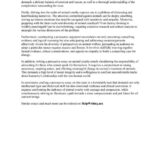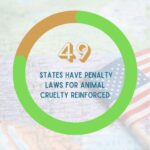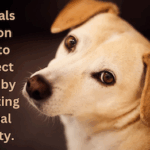In the vast tapestry of life, where every thread symbolizes an existence, it is disconcerting to observe that many choose to ignore the plight of the voiceless—the animals. The phenomenon of indifference towards animal cruelty raises an unsettling query: Are we witnessing a manifestation of apathy, or is it a form of denial? To unravel this intricate web, we must delve deep into the human psyche, society’s priorities, and the convoluted interplay between empathy and avoidance.
The idea of apathy brings to mind a wilting flower in a neglected garden—beautiful yet ignored. This neglect is emblematic of societal attitudes towards animal suffering. In an age marked by rapid technological advancement and incessant stimulation, desensitization is a looming specter. The cacophony of daily existence, burdened with human strife and concern, often drowns out the cries for help from our animal counterparts. This phenomenon can be likened to a barrier, a psychological shield that insulates individuals from the grim realities of cruelty.
Many people lead lives that are tightly woven with egocentric concerns. Bills need to be paid, jobs must be secured, and personal relationships demand attention. Within this relentless pursuit, the suffering of animals becomes an abstraction, a mere footnote in a broader narrative defined by human experiences. This prioritization—though perhaps a survival instinct—unfortunately breeds a milieu of neglect toward the sentient beings with whom we share the planet. The flickering images of abuse that surface on screens may evoke momentary outrage; however, that indignation often fades as quickly as it arrives, making room for the next viral sensation to capture fleeting attention.
On a parallel track lies another dimension—denial. Denial is a potent elixir, one that anesthetizes consciousness and serves as a convenient escape from uncomfortable truths. When confronted with the grotesque realities of animal cruelty—be it in factory farms, laboratories, or circuses—individuals often retreat into a fortress of denial, constructing narratives that absolve them of responsibility. They convince themselves that the circumstances are exaggerated, that the situation is beyond their control, or, tragically, that the intrinsic value of these lives pales in comparison to human needs. This rationalization strips animals of their personhood and reduces their suffering to mere statistics, an algorithmic data point positioned below the threshold of emotional relevance.
The oceans of indifference are not merely deep; they are vast. The tendrils of this ignorance stretch far and wide, reaching classrooms, boardrooms, and living rooms. Educational systems often prioritize human-centric issues while relegating animal welfare to the periphery—or completely overlooking it. Consequently, young minds are cultivated without an understanding of ethical stewardship towards animals, perpetuating an intergenerational cycle of detachment. The barriers erected by societal norms and the commercial pressures of the modern world further exacerbate this divide. For instance, sensationalized media headlines capturing animal cruelty may garner fleeting moments of outrage, but they quickly dissolve into the ether of human distraction.
Economics play an undeniable role in the perpetuation of animal cruelty. The global economy often favors the exploitation of animals through cheap and unethical farming practices. Such practices are cloaked in jargon and justified by profit margins, effectively rendering the conversation about reality mute. When consumers prioritize convenience and cost over compassion, they inadvertently bolster an environment where cruelty thrives. Buying meat or dairy products without considering the ethical implications diminishes the moral outrage—transforming complicit behavior into a mundane transaction devoid of empathy.
A further complication arises from cultural differences. In certain societies, animals are held in high esteem, regarded as companions and sentient entities deserving of protection. Conversely, there are cultures where animals are seen primarily as resources or even as disposable commodities. This dichotomy illustrates the complexities of human-animal relationships and the societal structures that influence them. The belief systems that shape these views often go unchallenged, with longstanding traditions perpetuating a cycle of cruelty that many find difficult to negotiate or break.
In this canvas of mixed emotions, an essential aspect remains crucial—a deeper exploration of empathy. Unlike apathy, which is rooted in the absence of concern, empathy possesses the capacity to bridge divides. The challenge lies in cultivating this empathy, nurturing it until it becomes a vibrant force that compels individuals to act. This necessitates not only awareness but a concerted effort to engage with and understand the emotions of animals. Documentary films, literature, and social media can contribute to this awakening. They weave narratives that resonate with the innate human yearning for connection and compassion—inviting individuals to bear witness and take heed of the suffering all around them.
Ultimately, the campaign against animal cruelty cannot thrive in isolation. It requires the coexistence of awareness and action, a synergy propelled by the human capacity for empathy. As monumental as this might seem, the first step is acknowledging the deep-seated apathy and denial that prevail. Only then can a path be carved toward a compassionate society that recognizes and values the lives of all beings, where the cries of the voiceless are no longer silenced by the din of daily existence. In this paradigm, the metaphorical flowers in the garden thrive, nourished by the collective responsibility and love that bind all sentient creatures together, painting a brilliant future for every life on this planet.






